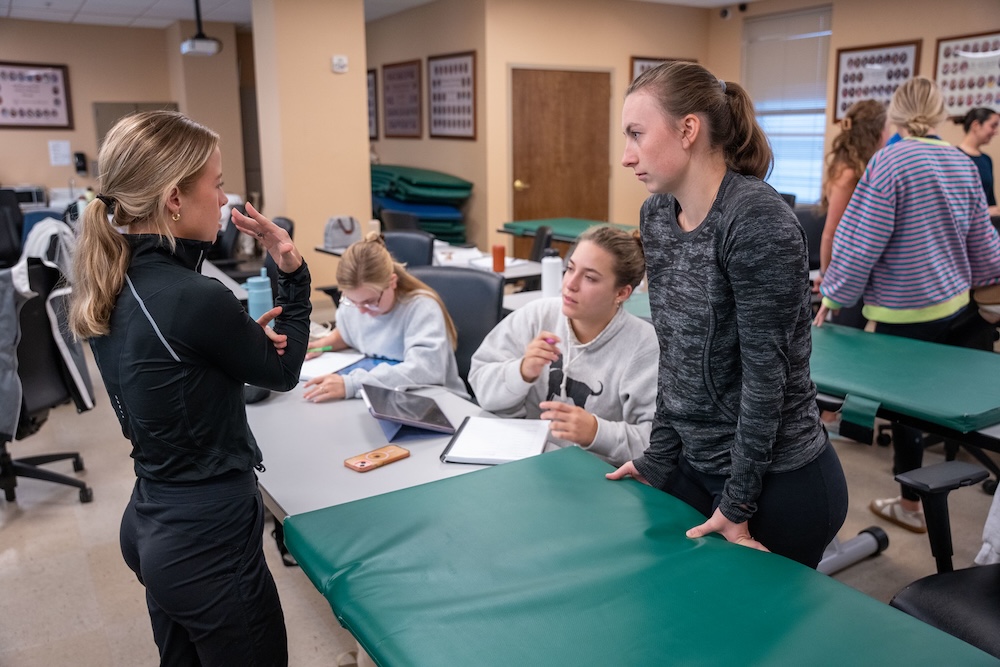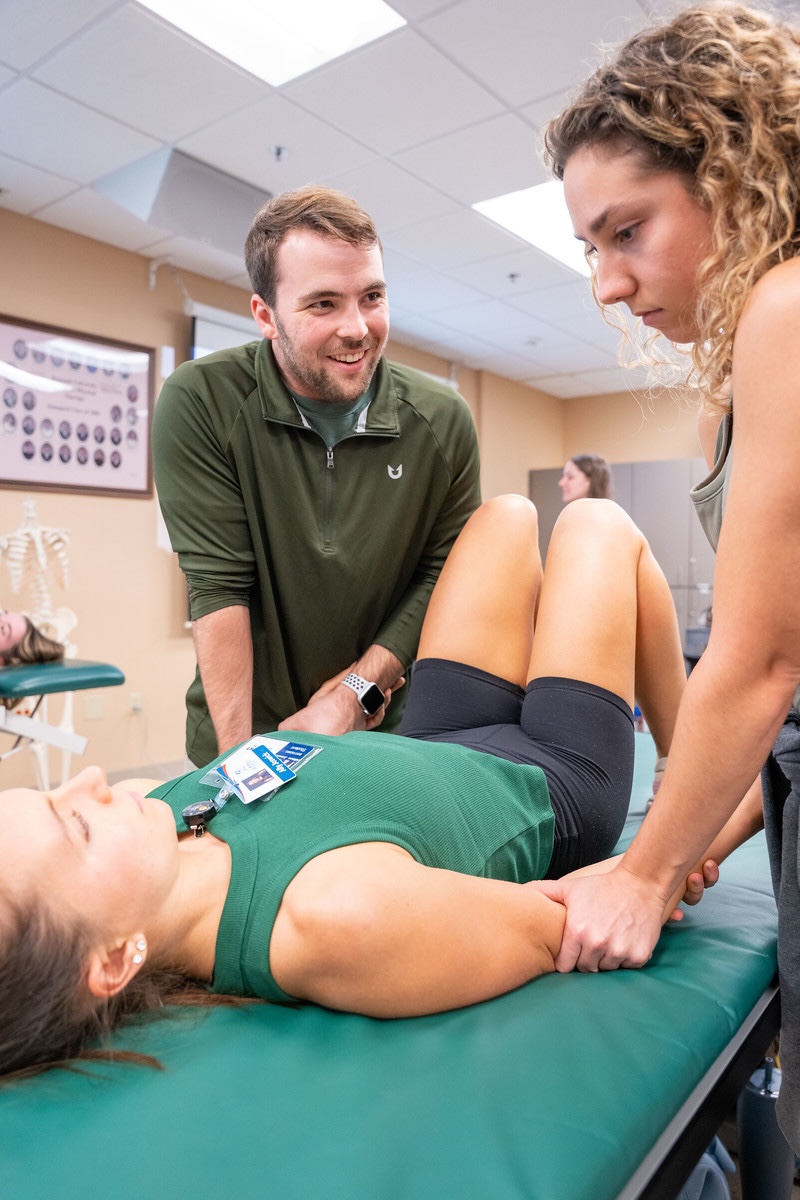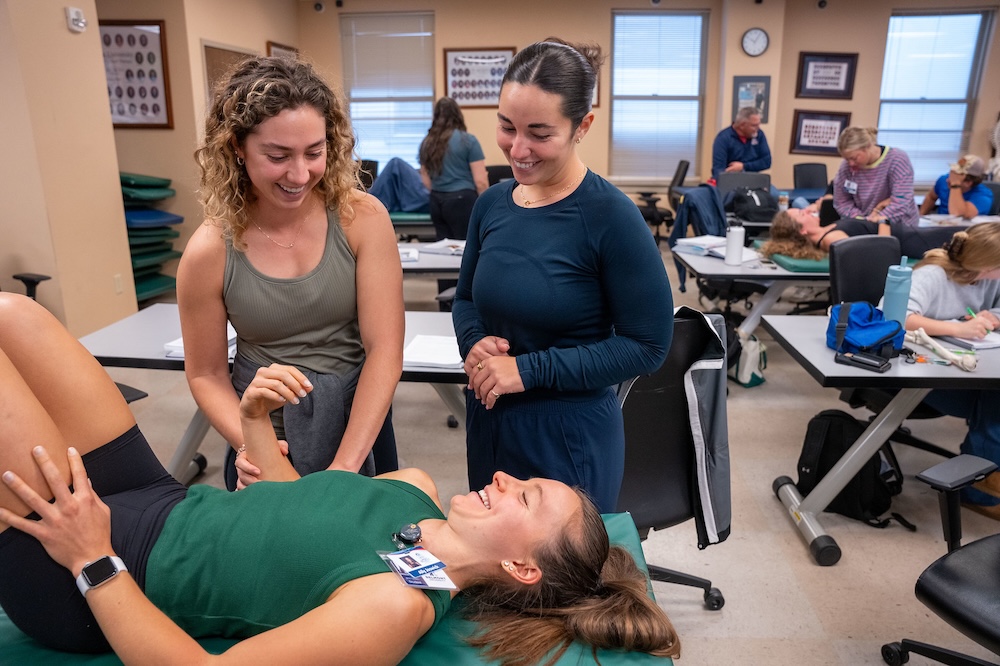New Vanderbilt orthopedic residency joins acclaimed lineup of advanced training programs
Belmont's newest physical therapy residency program received full accreditation this fall, adding to the school’s growing reputation for post-graduate training.
 The orthopedic residency with Vanderbilt University Medical Center joins two other accredited programs Belmont operates in partnership with Tennessee Orthopedic Alliance (TOA) — an orthopedic residency and a sports residency that includes work with the Tennessee Titans. Together, these programs represent the most physical therapy residency options of any institution in the state.
The orthopedic residency with Vanderbilt University Medical Center joins two other accredited programs Belmont operates in partnership with Tennessee Orthopedic Alliance (TOA) — an orthopedic residency and a sports residency that includes work with the Tennessee Titans. Together, these programs represent the most physical therapy residency options of any institution in the state.
"What sets us apart is the wealth of opportunities we have with our partners," said Dr. Mike Voight, professor and residency program coordinator. "Our residents have access to things most new graduates simply don't get — operating room observation, grand rounds at Vanderbilt and working sideline with an NFL team."
The programs share a distinctive three-pronged approach: clinical practice with partner organizations, structured mentorship from board-certified specialists and a teaching component within Belmont's Doctor of Physical Therapy (DPT) program.
From Training Rooms to Treatment Tables
The clinical experiences vary by program, but all offer access rarely available to early-career physical therapists.
Lucy Mitchell, a TOA sports resident, has a rigorous schedule with the Tennessee Titans on top of her other residency responsibilities. She arrives at the athletic training room by 5 a.m. several days a week, covers practices and games and still maintains clinic hours and teaching responsibilities at Belmont. The 13-month sports residency includes two full training camps.
“Working with the Titans has shaped my clinical skills while also shaping my outlook on being a valuable member of a team,” said Mitchell. “That aspect of my residency has allowed me to see sports specific injuries that I wouldn’t see in the clinic, and it has also allowed me to get a lot of hands-on practice with elite athletes that I wouldn’t get to treat otherwise.”
The orthopedic residents at TOA and Vanderbilt spend approximately 33-35 hours weekly treating patients with a wide variety of conditions. They also gain access to experiences that accelerate their development: observing surgeries in the operating room, attending physician consultations, and, for Vanderbilt residents, participating in grand rounds alongside orthopedic surgery fellows.
treating patients with a wide variety of conditions. They also gain access to experiences that accelerate their development: observing surgeries in the operating room, attending physician consultations, and, for Vanderbilt residents, participating in grand rounds alongside orthopedic surgery fellows.
"I spend about 33 hours each week treating patients at TOA, where I see a wide variety of orthopedic conditions," shared Casey Udicious, a TOA orthopedic resident. "I also have 4-8 hours of scheduled mentoring time per week, during which my mentor joins me in the clinic to treat patients together and provide feedback."
Learning to Teach, Teaching to Learn
The programs share a distinctive element that consistently draws applicants: a teaching component within Belmont's DPT program.
"One of the main things that drew me to Belmont's residency program was the opportunity to teach in the orthopedics course," Udicious said. "As a Belmont PT graduate, it's truly an honor to return and teach in the very class that sparked my passion for orthopedic physical therapy."
 Residents spend approximately 10 hours per week as lab instructors for second-year DPT students while maintaining clinical caseloads of 30-35 hours weekly. They also complete a teaching certification through Belmont's College of Pharmacy and Health Sciences.
Residents spend approximately 10 hours per week as lab instructors for second-year DPT students while maintaining clinical caseloads of 30-35 hours weekly. They also complete a teaching certification through Belmont's College of Pharmacy and Health Sciences.
"Being a lab instructor challenges me to connect what I’m learning in the clinic with the academic material I’m teaching and to think beyond textbook answers,” said Melissa Moravek, an orthopedic resident with TOA. “It’s a great way to continue growing both as a clinician and an educator.”
For Peter Gault, the Vanderbilt orthopedic resident, teaching proved more rewarding than anticipated.
“It’s been really meaningful to tell students, ‘I was in your shoes just two years ago, I get what you’re going through,’” Gault said.
Mentorship That Makes the Difference
Beyond teaching, residents point to mentorship as transformative. Each receives a minimum of 150 hours of one-on-one clinical mentoring from board-certified specialists throughout the year.
"The most valuable part of the program so far has been the mentoring," said Moravek. "Having the opportunity to learn directly from highly experienced and respected clinicians who challenge me to grow has been incredible. Their guidance has shaped not only my clinical skills but also my professional confidence."
Gault described a breakthrough moment during a mentoring session when his mentor helped him connect clinical reasoning he'd been struggling to piece together for a patient with shoulder pain.
"There's a lot more learning you have to do after you're out of school," Gault said. "Patients don't present exactly like a textbook."
Building Careers, Growing the Profession
The intensive training yields results: Belmont's residency programs maintain a 100 percent board certification pass rate. Graduates have gone on to varied positions ranging from clinical practice to working with sports teams.
For Moravek, the residency has opened unexpected possibilities. 
"I've discovered how much I enjoy the teaching aspect of the residency, and I could see myself pursuing opportunities in academia in the future," she said.
The programs are also building something beyond individual careers: a pipeline of future mentors. As residents graduate and establish themselves as board-certified specialists, they become equipped to guide the next generation of physical therapists through the same transformative experience.
"This residency is definitely time consuming, but it's incredibly rewarding," Moravek said. "I’m challenged every day and constantly learning, both in the clinic and the classroom. Everyone truly wants to see you succeed and grow."
Learn More
Learn more about physical therapy at Belmont

